UMW Toyota Motor has released official specifications of the updated 2015 Toyota Camry, which will be launched on April 2. A new engine, a new hybrid variant and added kit – let’s go through all of them, shall we?
First up, what’s under the bonnet. As mentioned previously, the Camry gets an all-new engine – a 6AR-FSE 2.0 litre four-cylinder petrol engine with VVT-iW and D-4S direct and port injection. Producing 167 PS at 6,500 rpm and 199 Nm at 4,600 rpm (17 PS and 9 Nm from before), it finally ditches the old four-speed automatic transmission for a six-speed unit with Super-ECT.
The new mill is capable of running on both Otto and Atkinson cycles, the latter for better efficiency. As such, it achieves a combined ECE-rated fuel consumption figure of 7.3 litres per 100 km, down from 8.3 litres per 100 km previously.
Bigger news is the availability of a new 2.5 Hybrid model, which mates a 2AR-FXE 2.5 litre VVT-i four-cylinder petrol engine (160 PS at 5,700 rpm and 213 Nm at 4,500 rpm) with a 143 PS/270 Nm electric motor and a nickel-metal hydride battery. Combined, they produce a total system power output of 205 PS and deliver a combined fuel consumption of 5.2 litres per 100 km.
Two trim levels are available for the 2.0 litre – the base 2.0E and the mid-level 2.0G, doing away with the recent 2.0G X variant. Both models now come with HID projector headlights with LED daytime running lights, dual exhaust outlets, keyless entry and push-button start, but otherwise equipment levels remain the same.
The 2.0E gets manually-adjustable fabric seats, a basic radio and CD/MP3 player with USB and iPod connectivity, six speakers, dual-zone automatic climate control with rear air vents and an Optitron instrument cluster with a new full-colour multi-info display. Going up to the 2.0G nets you eight-way power-adjustable leather seats, cruise control and security and solar film for the windows.
Sitting at the top of the range, the 2.5 Hybrid replaces the old 2.5V and comes with automatic LED twin-projector headlights, automatic wipers, an auto-dimming rear-view mirror, a new seven-inch touchscreen navigation system with Bluetooth connectivity and reverse camera, a 10-speaker JBL Green Edge Tech sound system, a Panasonic Nanoe air ioniser and Qi wireless charging. We don’t get the Thai-market car’s power-reclining rear seats and triple-zone climate control, though.
Last but not least, we come to safety – the 2.5 Hybrid gets the full complement of seven airbags (including one for the driver’s knee), VSC, Hill Start Assist and a Blind Spot Monitor with Rear Cross Traffic Alert (RCTA), but misses out on pre-crash alert, lane departure warning and dynamic radar cruise control, all of which come on cars from across the northern border.
As before, the 2.0 litre models get two airbags – on par with the Honda Accord but behind the six-airbags-as-standard Nissan Teana. Disappointingly, the base 2.0E soldiers on without VSC, either. On the options list for the 2.0 litre models is an aerokit derived from the Thai-market Extremo variant, a seven-inch touchscreen DVD-AVN system with Bluetooth and a reverse camera, as well as security and solar film for the 2.0E.
All that remains to complete the puzzle are prices for all variants, which we’ll find out during the launch of the 2015 Toyota Camry in two days time.
2015 Toyota Camry 2.0G
2015 Toyota Camry Hybrid 2.5HV
Looking to sell your car? Sell it with Carro.


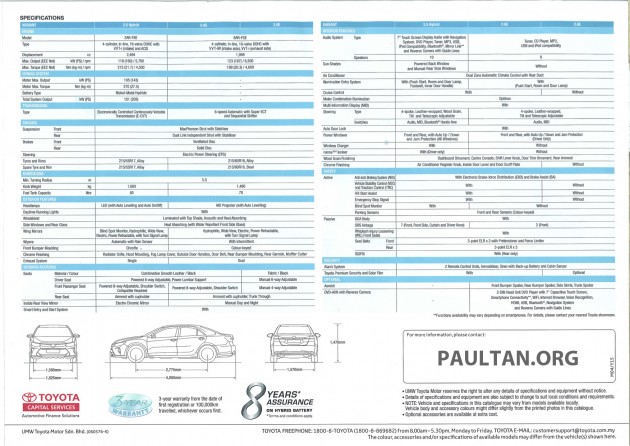


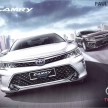
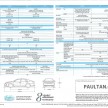
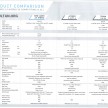
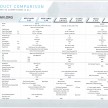
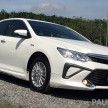
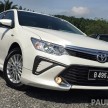
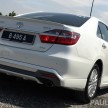
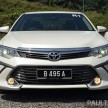
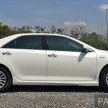
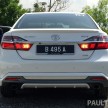
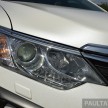
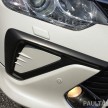
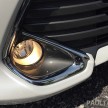
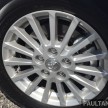

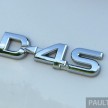
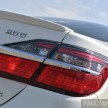

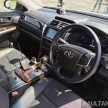

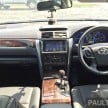

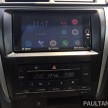
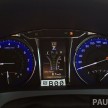
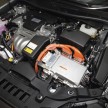
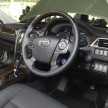
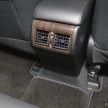
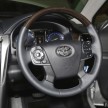
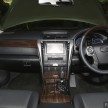
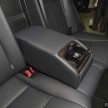
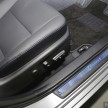
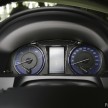
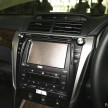
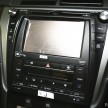
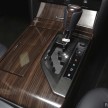
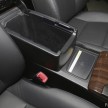
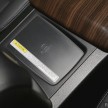
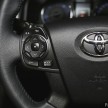
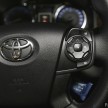
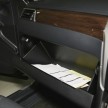
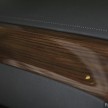
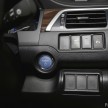
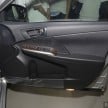
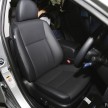
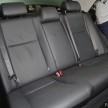
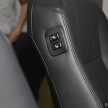

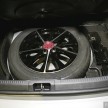
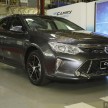
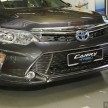

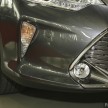
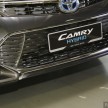
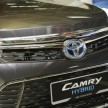
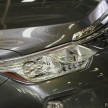
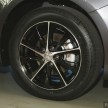

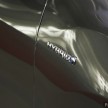

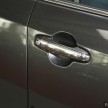
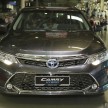
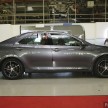
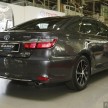
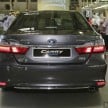
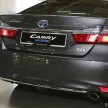

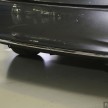
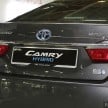
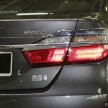
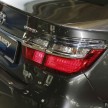
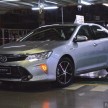
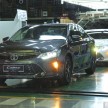
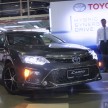
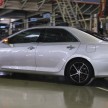
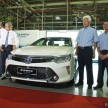
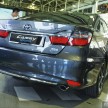
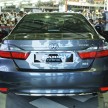

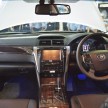
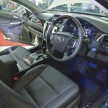
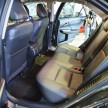
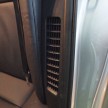
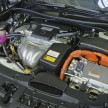
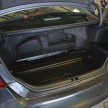




























AI-generated Summary ✨
Comments on the blog post about the 2015 Toyota Camry focus heavily on safety features and pricing concerns. Critics express disappointment over the ABSENCE of essential safety features like VSC and more airbags in lower and mid-range models, highlighting safety as a key consideration. Many compare Toyota's offerings unfavorably to other brands that include these features as standard, criticizing UMW's complacency and perceived prioritization of profit over safety. There is strong sentiment that the Camry's safety and value do not match its price, with some calling for better safety standards. Others compare Toyota with competitors like Honda, Hyundai, and Kia, emphasizing that Malaysians deserve better safety and value in their vehicles. Overall, the comments are largely negative, with concerns about safety, pricing, and perceived corporate arrogance.